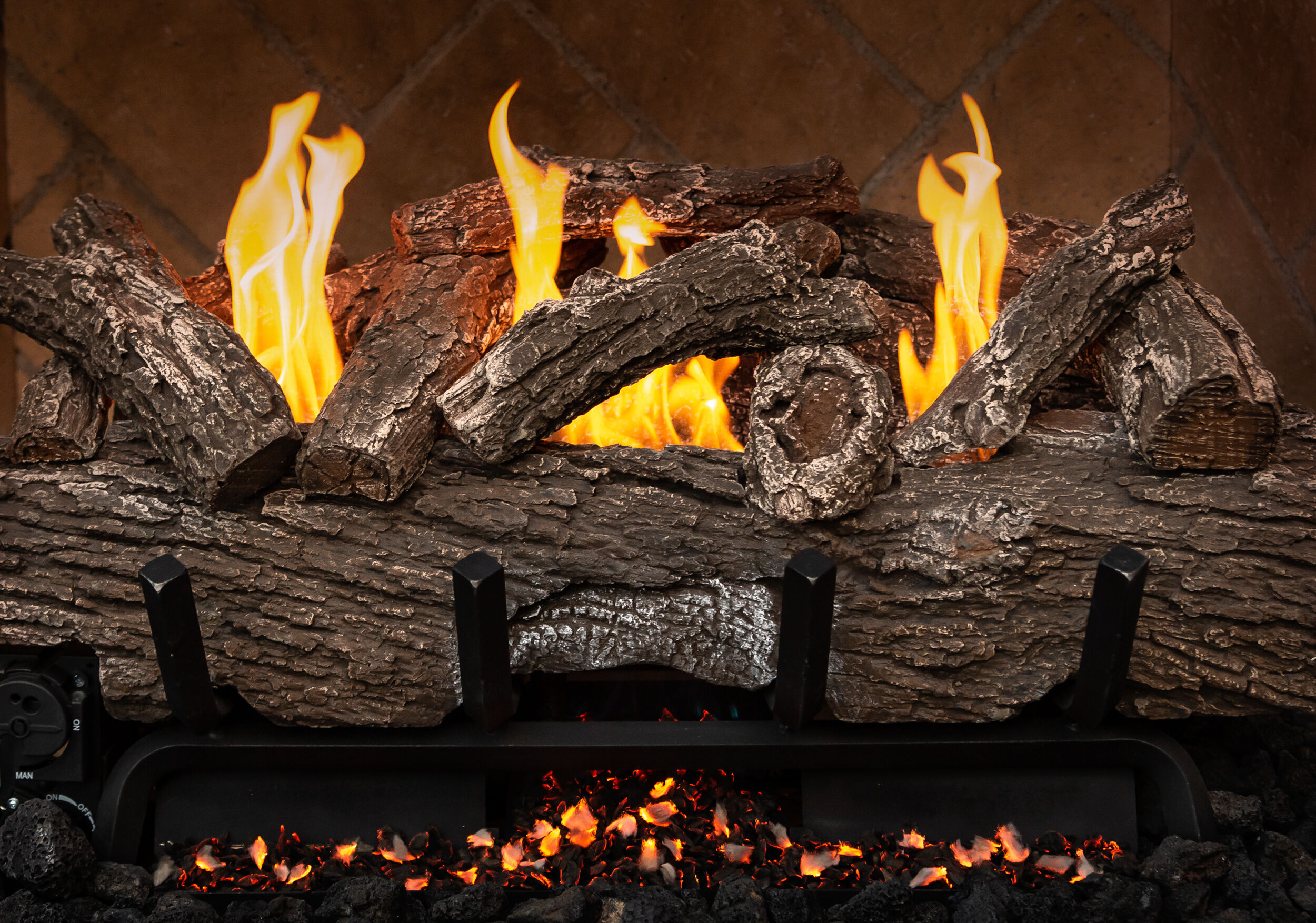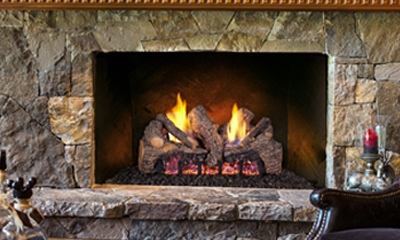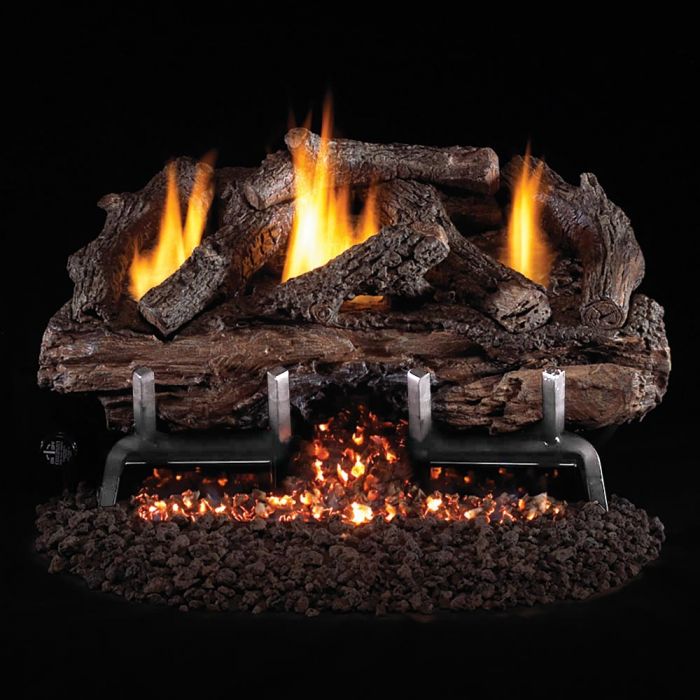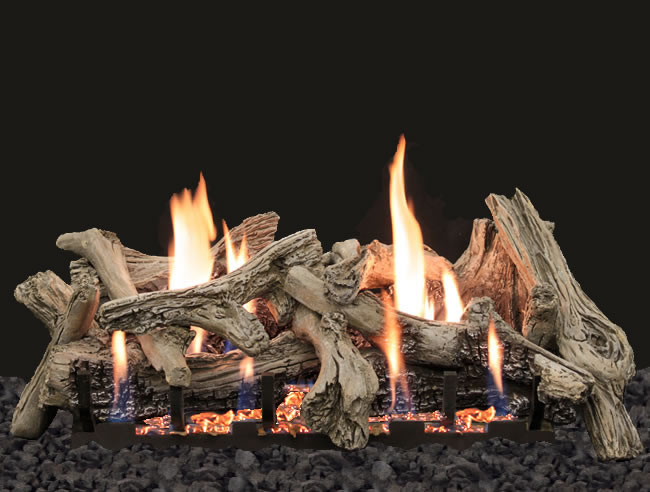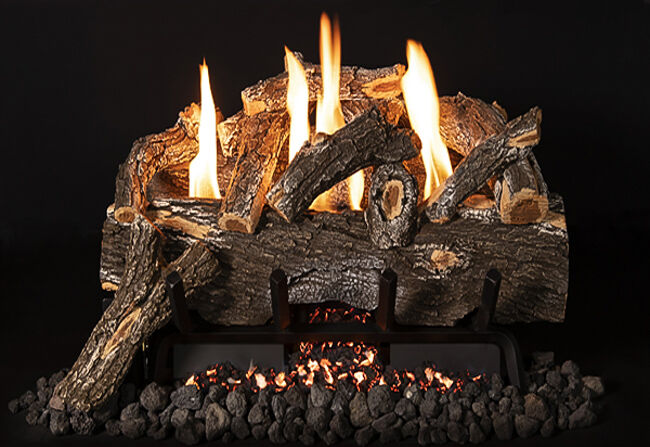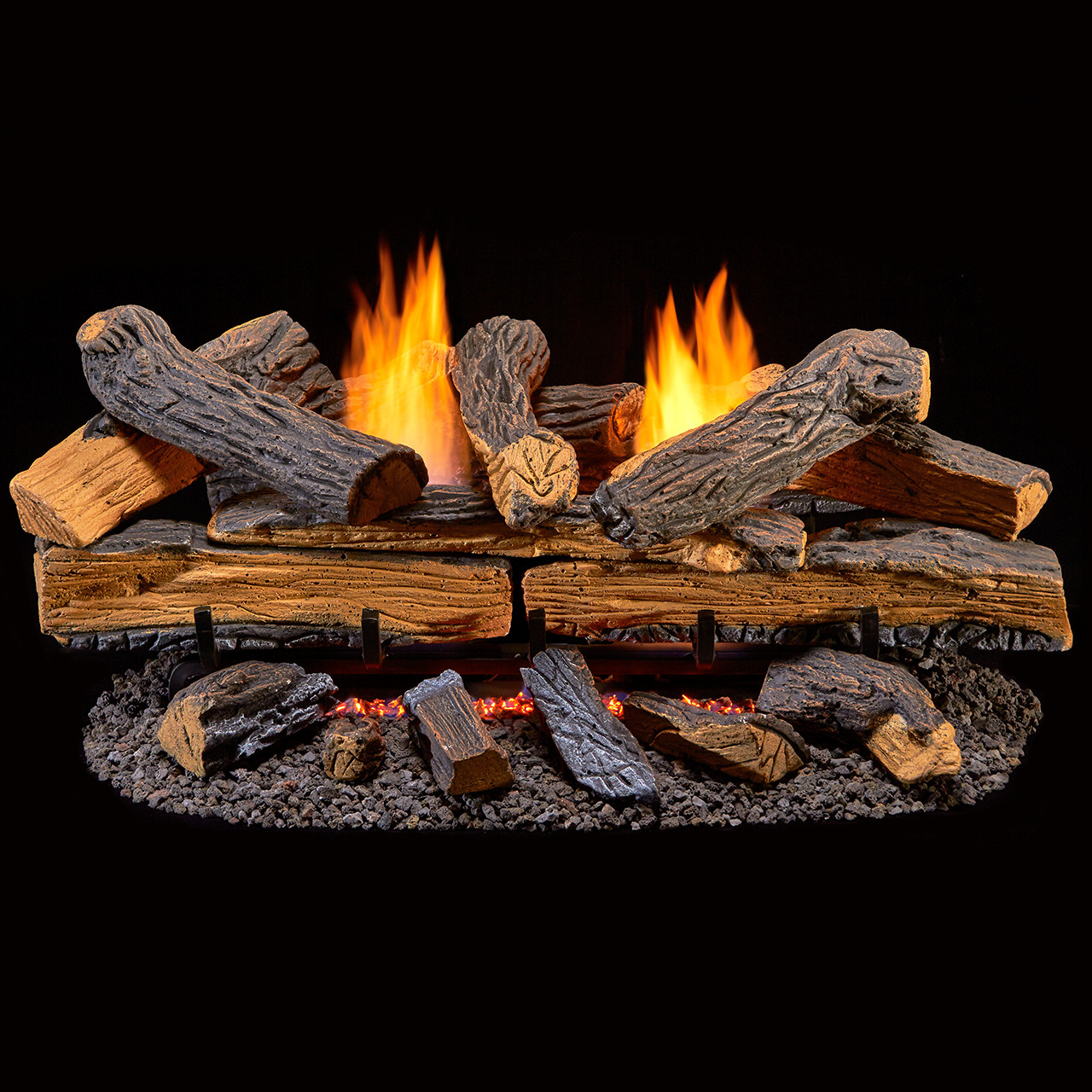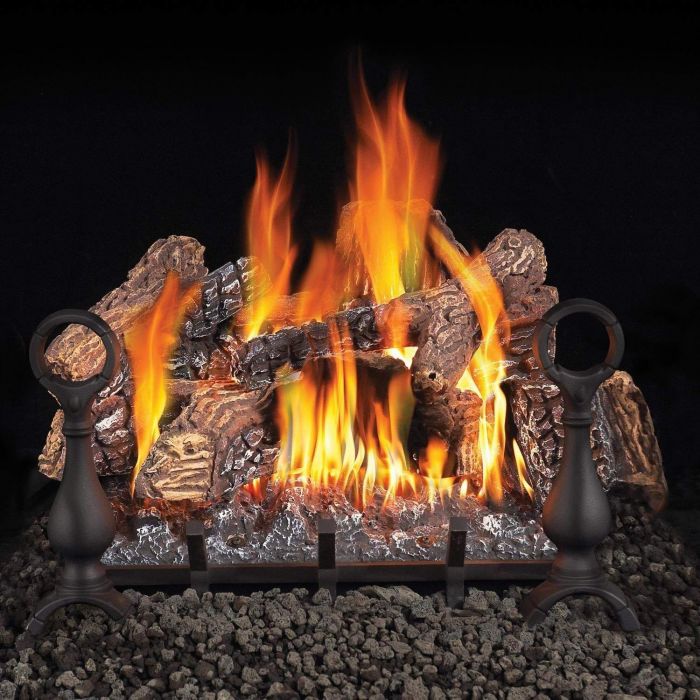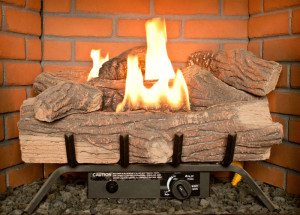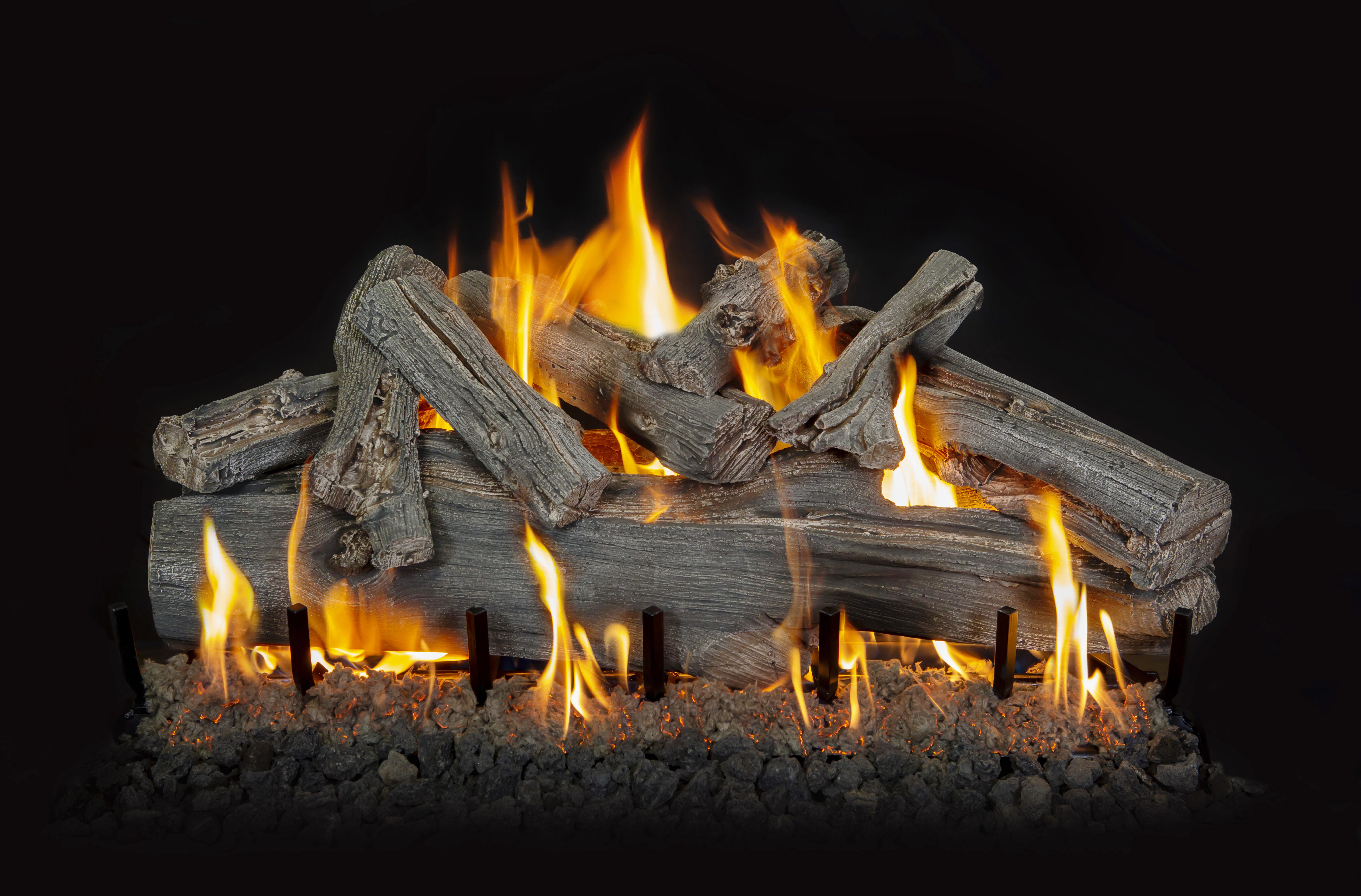Vent-free gas fireplace logs offer a convenient heating solution for homes without traditional chimneys or flues. These self-contained units burn cleanly and efficiently, using room air for combustion and releasing heat directly into the space. Unlike vented fireplaces, they don’t require expensive installations or structural modifications, making them ideal for apartments, basements, or rooms where adding a chimney isn’t practical. While they provide excellent supplemental heat, proper sizing, placement, and maintenance are crucial for safety and performance. Let’s discuss several key aspects of vent-free gas fireplace logs to help you determine if they’re right for your home.
How Vent-Free Gas Logs Work
Vent-free gas logs burn natural gas or propane with a high-efficiency burner system that minimizes combustion byproducts. Oxygen from the room air supports the flame, while built-in sensors monitor oxygen levels and automatically shut off if they drop too low. The heat produced radiates directly into the room rather than being lost through a chimney, achieving up to 99% efficiency. This makes them significantly more energy-efficient than traditional wood-burning or vented gas fireplaces.
The logs are typically made from refractory ceramic fiber or cement, designed to withstand high temperatures while creating a realistic wood-like appearance. A gas control valve allows you to adjust the flame height and heat output, with some models including remote controls or thermostats for precise temperature management. Since no venting is required, installation is straightforward—usually just connecting to an existing gas line and ensuring proper clearances from walls and furniture.
While highly efficient, vent-free logs do release small amounts of combustion byproducts like water vapor and carbon dioxide into the room, adequate room size and occasional ventilation are important, especially in tightly sealed modern homes. Most units include oxygen depletion sensors (ODS) as a safety feature, but proper sizing according to the room’s square footage is essential for safe operation.
Pros and Cons of Vent-Free Systems
The primary advantage of vent-free gas logs is their exceptional heating efficiency. Without a chimney to lose heat, nearly all the energy produced warms the room directly. They’re also cost-effective to install since no venting system is needed, and they can be placed in virtually any room with a gas connection. For homeowners wanting supplemental heat without renovation, they’re an attractive option. Many models offer realistic flame patterns and glowing ember beds that closely mimic a wood fire’s ambiance.
However, there are some drawbacks to consider. The moisture produced during combustion can increase indoor humidity, which may lead to condensation on windows in colder climates. Some people notice a slight odor from the burning gas, though high-quality units minimize this. Vent-free logs are also prohibited in some areas due to local building codes, so checking regulations is essential before purchase. While safe when properly maintained, they shouldn’t be used as a primary heat source in bedrooms or small, poorly ventilated spaces.
For those who prioritize convenience and efficiency over absolute authenticity, vent-free logs strike a good balance. They provide immediate, adjustable heat at the flip of a switch—no wood hauling or ash cleanup required. Just be aware of their limitations regarding moisture production and local restrictions before committing to this heating solution.

Installation Requirements and Considerations
Installing vent-free gas logs requires careful planning to ensure safety and optimal performance. The first consideration is proper sizing—units are rated by BTU output, which should match the room’s square footage. Generally, you need about 20-30 BTUs per square foot of space. Oversized units can create excessive moisture and oxygen depletion, while undersized ones won’t provide enough heat. Always follow the manufacturer’s guidelines for room size requirements.
Clearance distances are another critical factor. Most vent-free logs need at least 12 inches of space from combustible materials like walls, furniture, and drapes. Non-combustible flooring (like tile or stone) should extend at least 16 inches in front of the fireplace. If installing in an existing wood-burning fireplace, the chimney damper must be permanently locked open or removed to prevent gas buildup. Professional installation is recommended, especially for gas line connections and leak testing.
Ventilation, while not required for operation, is still important for indoor air quality. Even with oxygen sensors, occasional fresh air exchange helps prevent moisture buildup. Some local codes mandate a window or door in the room that can be opened. Always check your area’s regulations, as some jurisdictions restrict or prohibit vent-free appliances entirely due to safety concerns about indoor air quality.
Maintenance and Safety Tips
Regular maintenance ensures vent-free gas logs operate safely and efficiently. Before each heating season, inspect the burner and logs for dust or debris that could affect flame quality. Use a soft brush or compressed air to clean the burner ports, being careful not to damage the ceramic logs. Check the gas connections for leaks using a soapy water solution—bubbles indicate a leak that needs professional attention.
The oxygen depletion sensor (ODS) is a critical safety component that requires occasional testing. Follow the manufacturer’s instructions to verify it’s functioning properly—typically by reducing the flame until the pilot shuts off. Replace thermocouples and thermopiles as recommended (usually every 3-5 years) to maintain reliable operation. Keep the area around the fireplace clear of flammable items, and install carbon monoxide detectors nearby as an extra precaution.
For optimal performance, avoid using scented candles or aerosol sprays near the fireplace, as these can clog the burner ports over time. If you notice any unusual odors, yellow tipping flames (should always be blue), or soot buildup, turn off the unit and have it serviced. Annual professional inspections are advisable to check gas pressure, venting (if applicable), and overall system integrity.
Comparing Vent-Free to Vented Gas Logs
Vent-free and vented gas logs serve different purposes, and choosing between them depends on your priorities. Vent-free models excel at heating efficiency, converting nearly all the gas’s energy into room warmth. They’re also easier and cheaper to install since no chimney or flue is needed. However, they lack the realistic look of vented logs and produce some indoor moisture as a byproduct of combustion.
Vented gas logs require a functioning chimney or flue but offer more authentic flame patterns and log appearances. The flames dance around the logs similarly to a wood fire, making them preferable for ambiance over heating. Since combustion byproducts vent outside, they don’t affect indoor air quality. However, much of the heat escapes up the chimney, making them only about 10-20% efficient at heating a room.
Your choice should depend on whether you prioritize heat output or visual appeal. Vent-free is better for supplemental heating in spaces without existing fireplaces, while vented suits traditional fireplaces where ambiance matters most. Some homeowners install both—vent-free for winter heating and vented for decorative use during milder weather.
Design Options and Customization
Modern vent-free gas logs come in various styles to match different home aesthetics. Traditional designs feature oak or maple log sets with glowing ember beds, while contemporary options may include sleek linear burners with minimalist media like glass beads or stones. The size and arrangement of logs vary, too, from compact 18-inch sets for small fireplaces to expansive 36-inch configurations for large hearths.
Flame customization is another consideration. Many models allow adjusting both flame height and ember bed brightness to create the desired ambiance. Some high-end units feature realistic dancing flames with multiple burner tiers for depth. Remote controls and thermostats add convenience, letting you adjust heat and flame settings from across the room.
For those replacing wood-burning fireplaces, conversion kits are available to retrofit the space with gas logs. These often include decorative fronts or surrounds to hide the old fireplace opening. Always ensure any decorative elements are non-combustible and maintain proper clearances from the burner. With numerous sizes, styles, and control options available, you can find vent-free logs that complement your room’s design while providing efficient heat.
Are vent-free gas fireplace logs safe to use indoors?
Vent-free gas logs are safe when properly installed, maintained, and used according to manufacturer guidelines. They include oxygen depletion sensors (ODS) that automatically shut off the unit if oxygen levels drop too low. However, they should never be used as a primary heat source in bedrooms or small, enclosed spaces. Proper sizing for the room’s square footage is crucial—too large a unit can produce excessive moisture and reduce air quality. Always install carbon monoxide detectors nearby and ensure the room has some ventilation, even if not required for operation.
How much does it cost to install vent-free gas logs?
Installation costs vary based on whether you’re adding to an existing fireplace or creating a new setup. Basic installations in an existing fireplace with a gas line typically cost $300-$800, including the log set. New gas line runs add $200-$500, depending on distance. High-end vent-free units with remote controls or thermostats range from $500-$1,500. Professional installation is recommended for gas connections and safety checks. Compared to vented gas logs or wood-burning fireplaces, vent-free options are generally cheaper since they don’t require chimney work or extensive venting systems.
Do vent-free fireplaces produce a lot of moisture?
Vent-free gas logs do produce water vapor as a byproduct of combustion—about 1 gallon of water per 100,000 BTUs burned daily. In well-insulated homes, this can increase humidity levels, potentially causing window condensation in winter. Proper sizing helps minimize moisture issues; oversized units exacerbate the problem. Using the fireplace intermittently rather than continuously allows humidity to dissipate. In dry climates, the added moisture can be beneficial, but in already humid areas, it may require running a dehumidifier.
Can you roast marshmallows over vent-free gas logs?
No, you should never cook food over vent-free gas logs. Unlike wood fires or some vented gas fireplaces, vent-free logs aren’t designed for cooking. The ceramic logs may contain chemicals not intended for food contact, and the combustion process introduces trace amounts of byproducts you wouldn’t want near food. Additionally, drips from food could clog burner ports or create fire hazards. For a similar experience, consider a vented gas fireplace with cooking capabilities or use an outdoor gas fire pit designed for cooking.
Why does my vent-free fireplace smell like gas?
A slight odor when first starting the fireplace is normal as dust burns off the logs, but persistent gas smells indicate an issue. Common causes include a dirty burner (clean with compressed air), improper gas pressure (needs professional adjustment), or leaks in the gas line (test with soapy water). Vent-free units should produce minimal odor when operating correctly. If you detect strong gas smells, turn off the unit immediately, ventilate the area, and contact a technician. Never ignore gas odors, as they could signal dangerous leaks.
How long do vent-free gas logs typically last?
With proper maintenance, vent-free gas log sets can last 10-15 years. The ceramic logs themselves may last indefinitely if not cracked or damaged, but burners and controls typically need replacement after a decade. Thermocouples and thermopiles (safety components) often require changing every 3-5 years. Regular cleaning and annual professional inspections extend the system’s lifespan. Usage patterns affect longevity—units run frequently may wear out faster. If you notice inconsistent flames, difficulty igniting, or excessive soot, it may be time to replace components or the entire system.
Napoleon GVFL18 Ventless Gas Log Set, 18-Inch
VENT FREE (Unvented) GAS LOGS – Greenville SC – Blue Sky Chimney
Vented vs Ventless Gas Logs
Empire Vent Free Ponderosa Gas Log Set With Slope Glaze Burner and Electronic Variable Remote
Related Posts:
